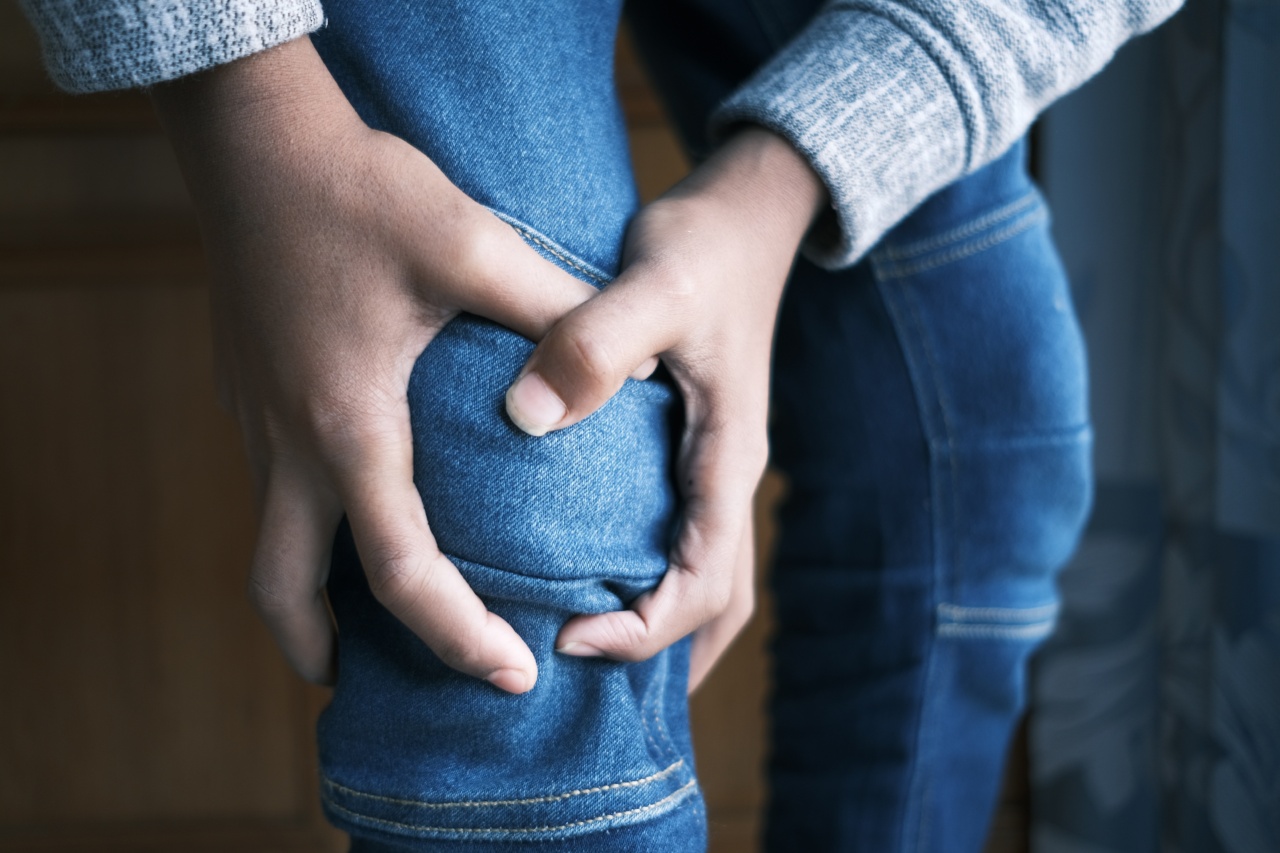Knee pain can be a challenging problem to deal with, and it can be difficult to know what is causing it. There are a variety of potential causes of knee pain, ranging from injuries to chronic conditions like arthritis.
If you’re struggling with knee pain, it’s important to understand what may be causing it so that you can work to manage your symptoms and find relief.
Common Causes of Knee Pain
There are many possible causes of knee pain, but some of the most common include:.
1. Osteoarthritis
Osteoarthritis is a chronic condition that causes the cartilage in your joints to break down over time, leading to pain, stiffness, and limited mobility.
Knee osteoarthritis is a common form of this condition, and it tends to affect people as they get older.
2. Rheumatoid Arthritis
Rheumatoid arthritis is an autoimmune condition that causes your immune system to attack the lining of your joints. This can lead to inflammation, pain, and joint damage.
While this condition can affect any joint in your body, it is often seen in the knees.
3. Bursitis
Bursitis occurs when the bursa, which is a small fluid-filled sac that helps to cushion your joints, becomes inflamed. This can lead to pain, swelling, and stiffness in the affected joint. Knee bursitis can be caused by overuse or injury.
4. Tendinitis
Tendinitis is an inflammation of the tendons that connect your muscles to your bones. In the knee, tendinitis can be caused by overuse or injury, and it can lead to pain, swelling, and limited mobility.
5. Meniscus Tear
The meniscus is a piece of cartilage that helps to cushion your knee joint. If this cartilage becomes damaged, it can lead to a meniscus tear, which can cause pain, swelling, and limited mobility in the knee.
6. ACL Injury
The ACL, or anterior cruciate ligament, is one of the major ligaments in your knee. If this ligament becomes torn or injured, it can lead to pain, swelling, and limited mobility in the knee.
7. Patellar Tendinitis
Patellar tendinitis is an inflammation of the tendon that connects your kneecap to your shinbone. This condition is often seen in athletes who do a lot of jumping or running, and it can cause pain, swelling, and limited mobility in the knee.
8. IT Band Syndrome
The iliotibial (IT) band is a thick band of tissue that runs from your hip to your knee. If this band becomes tight or inflamed, it can cause pain and limited mobility in the knee. IT band syndrome is often seen in runners and other athletes.
9. Knee Sprain
A knee sprain occurs when one of the ligaments in your knee becomes stretched or torn. This can cause pain, swelling, and limited mobility in the knee. Knee sprains are often caused by twisting or turning your knee too quickly.
10. Fracture
A fracture, or broken bone, can be a serious cause of knee pain. Fractures can be caused by trauma or injury, and they can cause pain, swelling, and limited mobility in the affected knee.
How to Treat Knee Pain
If you’re experiencing knee pain, there are a variety of treatments that may be able to help you find relief. Some of the most common treatments for knee pain include:.
1. Rest and Ice
Resting your knee and applying ice to the affected area can help to reduce inflammation and relieve pain. This is especially important if your knee pain is caused by an injury or overuse.
2. Physical Therapy
Physical therapy can be a helpful treatment for many types of knee pain. Your physical therapist may recommend exercises to help strengthen your knee and improve your range of motion.
3. Medications
Over-the-counter pain medications like acetaminophen and ibuprofen can be helpful for managing knee pain. Your doctor may also prescribe stronger pain medications if your knee pain is severe.
4. Injections
Injections of corticosteroids or hyaluronic acid can be helpful for reducing inflammation and relieving knee pain. These injections are typically administered by a doctor or healthcare professional.
5. Surgery
If your knee pain is caused by an injury or a chronic condition like arthritis, surgery may be necessary to provide relief. There are many different types of knee surgeries, ranging from minimally invasive procedures to full knee replacements.
Preventing Knee Pain
While not all types of knee pain can be prevented, there are some steps you can take to reduce your risk. Some tips for preventing knee pain include:.
1. Stretching
Stretching your legs and knees regularly can help to improve your flexibility and reduce your risk of injury.
2. Wearing Proper Footwear
Wearing shoes that fit well and provide good support can help to reduce your risk of knee injuries and pain.
3. Maintaining a Healthy Weight
Maintaining a healthy weight can help to reduce the stress on your knees and lower your risk of developing conditions like osteoarthritis.
4. Avoiding High-Impact Activities
Activities like running and jumping can put a lot of stress on your knees. If you’re prone to knee pain, you may want to consider lower-impact activities like cycling or swimming instead.
Conclusion
Knee pain can be a frustrating and debilitating problem, but there are many possible causes and treatments to consider.
If you’re struggling with knee pain, it’s important to work with your doctor to determine the underlying cause of your symptoms and develop a treatment plan that is right for you.




























